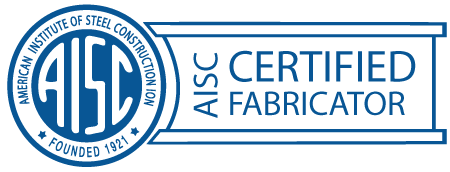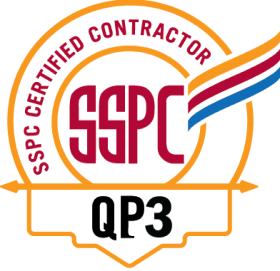When choosing a liquid storage tank, an important feature is whether it should be a cone bottom or flat bottom tank. Selection is affected by several factors, such as your budget, the size of the tank, what type of liquid is being stored, the tank’s location, transportability, and size.
Everyone will have a unique set of parameters to consider, to avoid potentially costly problems and regrets down the line. In this article, we provide a comparison of these two types of tanks and their advantages and disadvantages, to ensure that you have the right information to make your final decision.
What Is a Liquid Storage Tank?
T BAILEY LLC fabricates liquid storage tanks from high-quality welded carbon or stainless steel. We supply turnkey and build-to-order tanks across the municipal, civil, commercial, industrial, and military sectors.
Our liquid storage tanks are utilized for a multitude of different applications, including:
- Potable and process water.
- Wastewater, digesters, and sludge storage.
- Fire protection.
- Industrial chemicals.
- Food, beverage, or agricultural products.
- Petroleum, oil, and other fuel products.
Tanks can be vertical or horizontal, and single or double walls. The contained product can be stored at ambient temperature, or heated or refrigerated according to storage requirements. They can be manufactured in any size, from small shop-built tanks to massive field-erected reservoirs.
The most commonly used tank type is the vertical round tank. It has an inlet at the top and an outlet at the bottom. The drainage requirements are essential when choosing between a cone bottom or flat bottom tank.
The Comparison: Cone Bottom Tanks vs Flat Bottom Tanks
Both cone and flat bottom tanks are cylindrical tanks. The difference is in the shape of their bases and how they are supported.
A tank with a conical base can’t stand erect by itself and requires that it be installed in a special supporting stand. A flat-bottom storage tank is free-standing as it has a flat bottom that rests directly on the substrate.
A cone-bottom tank has an outlet at the tip of the cone-shaped section, whereas a flat-bottom tank has its outlet as low as possible in the cylindrical wall of the tank or through a floor penetration.
Cone Bottom Tanks
#1. Applications:
A cone bottom tank is used in processes where complete drainage is essential. This includes storage of heavy liquids and sludges that are difficult to drain. They are also used to separate and decant solids from liquid fractions.
The angle of the cone’s slope depends on the application. Generally, a steep cone is used for settling liquids that form sediment, and a shallow cone is used for non-settling liquids.
#2. Advantages:
- A sloped base enables complete drainage.
- Easy to bottom-fill.
- Can tap off sediment without draining liquid fraction.
- No low spots where sediment can accumulate.
- Especially suited to high solids content slurries.
#3. Disadvantages:
- Require special stands and more headroom.
- More difficult to move.
- Must be installed on concrete.
- Top heavy therefore requires more seismic bracing.
- Geometry promotes fluid 'stall' leading to stratification, temperature gradients, and radial flow.
- If used for mixing, it requires the use of a longer, more expensive impeller shaft.
- Not suited to suspension of solids, especially in concentrations above 5%.
Flat Bottom Tanks
#1. Applications:
Flat-bottom tanks are used to store any low-viscosity liquids like water, oil, agricultural or industrial chemicals, etc. These basic shaped tanks are suited to a wide range of conditions where a complete drain is unnecessary or unwanted.
#2. Advantages:
- A basic tank that can be installed indoors or outdoors.
- Lower manufacturing costs.
- Easier to install, manage and transport.
- No stand required, therefore cheaper.
- Can be installed on various substrates including sand, pea gravel, and concrete.
- May not require anchoring.
- Best suited for solids or particulates to separate and settle.
- If a mixer is installed, it has neutral geometry for solids suspension and overall fluid motion.
- Impeller shaft length can be shorter, reducing cost.
- Best choice for cryogenic storage.
#3. Disadvantages:
- Difficult to drain the last dredges below the outlet, especially when they contain high-viscosity fluids.
- May require corrosion control and cathodic protection at the base if substrate drainage is inadequate.
Conclusion
At T BAILEY LLC, we offer a variety of different liquid storage tank shapes to suit every possible storage situation. If you are looking for a new tank for your application, we will design, fabricate and deliver the best tank to achieve your process goals.
If you need help selecting a tank, ask us about it! We will put all our experience, technical skills, and knowledge at your disposal to ensure that you choose the most suitable and cost-effective option. For more information about cone-bottom tanks vs flat bottom tanks please contact us to consult with our storage tank fabrication specialists.






